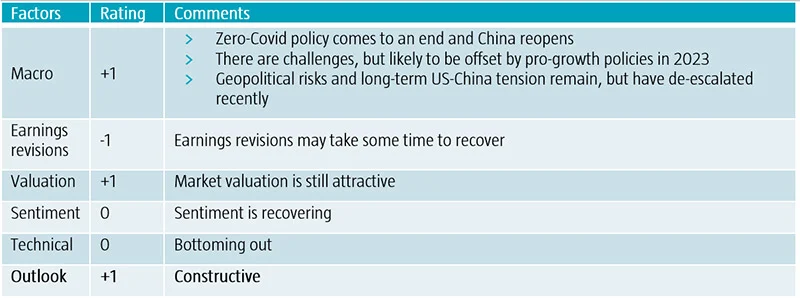The move has shattered the narrative among China skeptics that political leaders had ushered in a repressive economic ice age. The flexibility demonstrated in the fourth quarter of 2022 has in our view set China up for growth in 2023, after three years of stagnation and uncertainty.
The road ahead remains challenging, with confidence in the property market still absent and the disruption caused by the country’s sudden Covid exit strategy making headlines. Nevertheless the pragmatism and comprehensive nature of the 2023 policy prescription has justified our confidence that the worst was indeed over for China by Q3 2022.
We are upgrading our outlook for China to constructive based on our five-factor model, with a confluence of macroeconomic pro-growth pivots such as expansionary fiscal policy, the potential for further monetary policy easing, China reopening, and comprehensive policy support for the property sector. With valuations in key sectors still at historical lows and investor sentiment recovering, we believe it’s an appropriate time to increase exposure to Chinese equities, through an active investment strategy.
What EM opportunities are out there?
Receive our newsletter to dive deep into EM investment opportunities.
Market outlook
This is how we summarize the current outlook for investors in China based on our five-factor model.

Download the full insight pdf for analysis of China’s macroeconomic outlook, the Covid re-opening, the property sector, the digital sector and possible risks ahead.



















